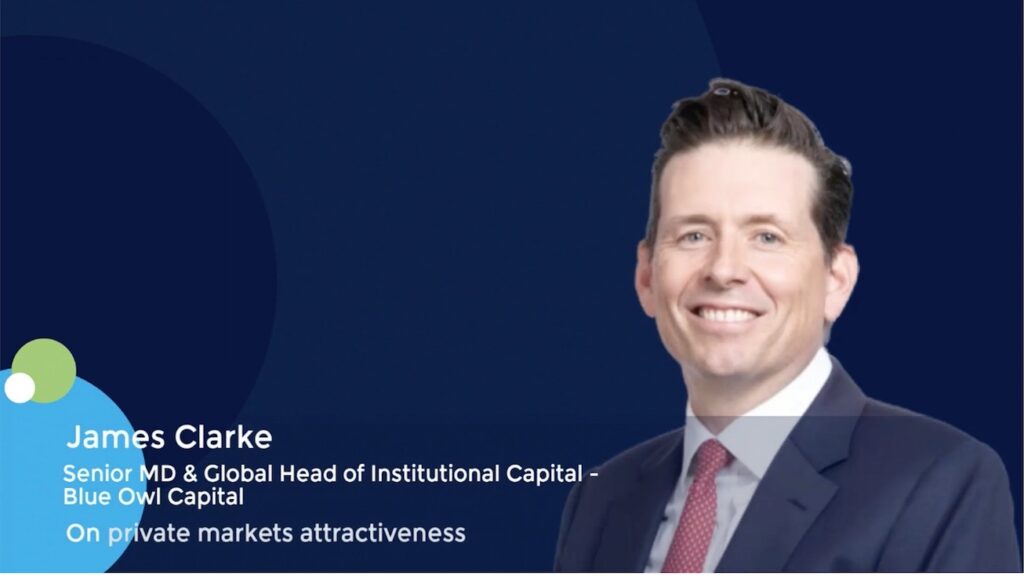Dominik Burckgard, Managing Director and Head of Hong Kong at Partners Capital, on the evolution of private assets in clients portfolios
In the latest ION Influencers Fireside Chat, host Giovanni Amodeo sat down with Dominik Burckgard, Managing Director and Head of Hong Kong at Partners Capital, to discuss how private assets are shaping the future of client portfolios. The conversation covered the evolution of investor needs, the rise of alternative assets, private equity strategies, credit markets, and alignment of interests between managers and clients.
Key Topics Discussed
1. Evolution of Client Needs
-
Traditional goals remain the same—maximizing returns across cycles—but clients today demand more accountability from managers and advisors.
-
High-net-worth individuals (HNWIs) and family offices are increasingly allocating to alternatives (hedge funds, private equity, private credit), mirroring institutional investors.
-
Family offices, in particular, have become more sophisticated, requiring in-depth discussions on portfolio construction and strategy.
2. Why Investors Choose External Advisors
-
Scale and access: Larger firms can secure preferential terms and top-tier opportunities.
-
Deep expertise: Running global portfolios requires resources beyond most in-house teams.
-
Innovation: Designing differentiated solutions—like litigation funding or specialized private equity structures—gives clients an edge.
3. Building the Right Investment Team
-
Partners Capital hires investors, not just allocators, emphasizing real investment experience.
-
Key traits sought include a long-term passion for investing, cross-asset class knowledge, and balanced perspectives.
4. Current Market Outlook & Asset Classes
-
The risk-return curve has flattened, meaning traditional equities may not deliver historic returns.
-
Credit and absolute return hedge funds are increasingly attractive, offering equity-like returns with lower volatility.
-
For higher return targets, illiquid assets (private equity and private credit) remain crucial due to their illiquidity premium (2–3% over public markets).
5. Private Credit Opportunities
-
Current risks are not systemic like the 2008 crisis; balance sheets are healthier.
-
Preference leans toward private credit for greater control and potential upside.
-
Growing specialization (e.g., asset-backed lending, litigation funding) allows investors to build more precise, diversified portfolios.
6. Private Equity Outlook (3–5 Years)
-
Returns are expected to moderate compared to the past decade.
-
Successful strategies will rely less on leverage and multiple expansion, and more on fundamental value creation (revenue and profit growth).
-
Focus shifting from mega-cap funds to mid-market, specialist, and emerging managers in areas like healthcare and technology.
7. Access, Selection & Portfolio Structuring
-
Access to top managers is critical and requires being seen as a dependable, long-term capital partner.
-
Selection: Rigorously evaluating managers’ true value creation is essential since most fail to generate alpha after fees.
-
Structuring: Innovation in portfolio design—such as new fund formats—helps tailor solutions for different client needs.
8. Alignment of Interests
-
Transparency, integrity, and “skin in the game” are key.
-
Proper GP commitments, fair distribution of carried interest, and consistency in strategy execution are vital to avoid misalignment.
-
An emerging issue: uncalled capital late in fund life cycles challenges alignment, raising questions about fee rebates and capital return.
Key Takeaway
Dominik Burckgard emphasized that the future of wealth management lies in alternative assets, rigorous manager selection, and alignment of interests. For investors seeking high single-digit returns in today’s environment, private equity and private credit remain essential, but success requires a sharper focus on specialization, value creation, and innovative portfolio structuring.
Key timestamps:
00:07 Introduction to the Fireside Chats
02:11 Evolving Client Needs in Investment
04:48 The Role of External Investment Providers
06:49 Building an Effective Investment Team
09:10 Current Trends in Asset Classes
11:41 Analyzing Credit Market Risks
14:26 Outlook on Private Equity
17:19 Assessing Emerging Managers
20:47 Identifying Red Flags in Investment Management
21:33 Ensuring Alignment of Interests
22:31 Evaluating Team Dynamics
23:10 The Importance of Scale and Access
24:27 Evolving Roles in Investment Management
25:22 Rigorous Manager Selection Process
27:13 Aligning with Clients and LPs
28:24 Challenges in Capital Commitment











